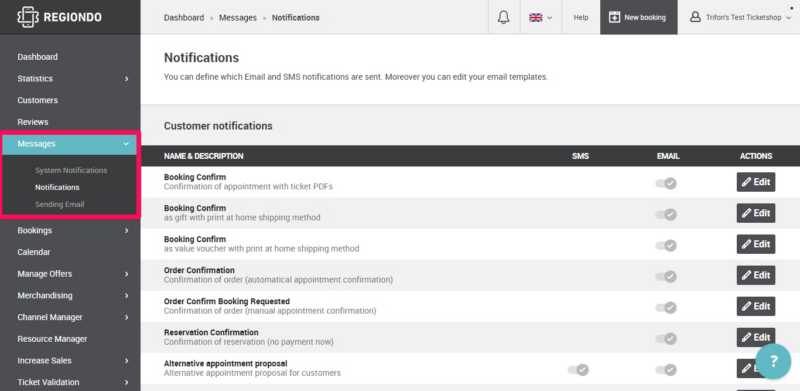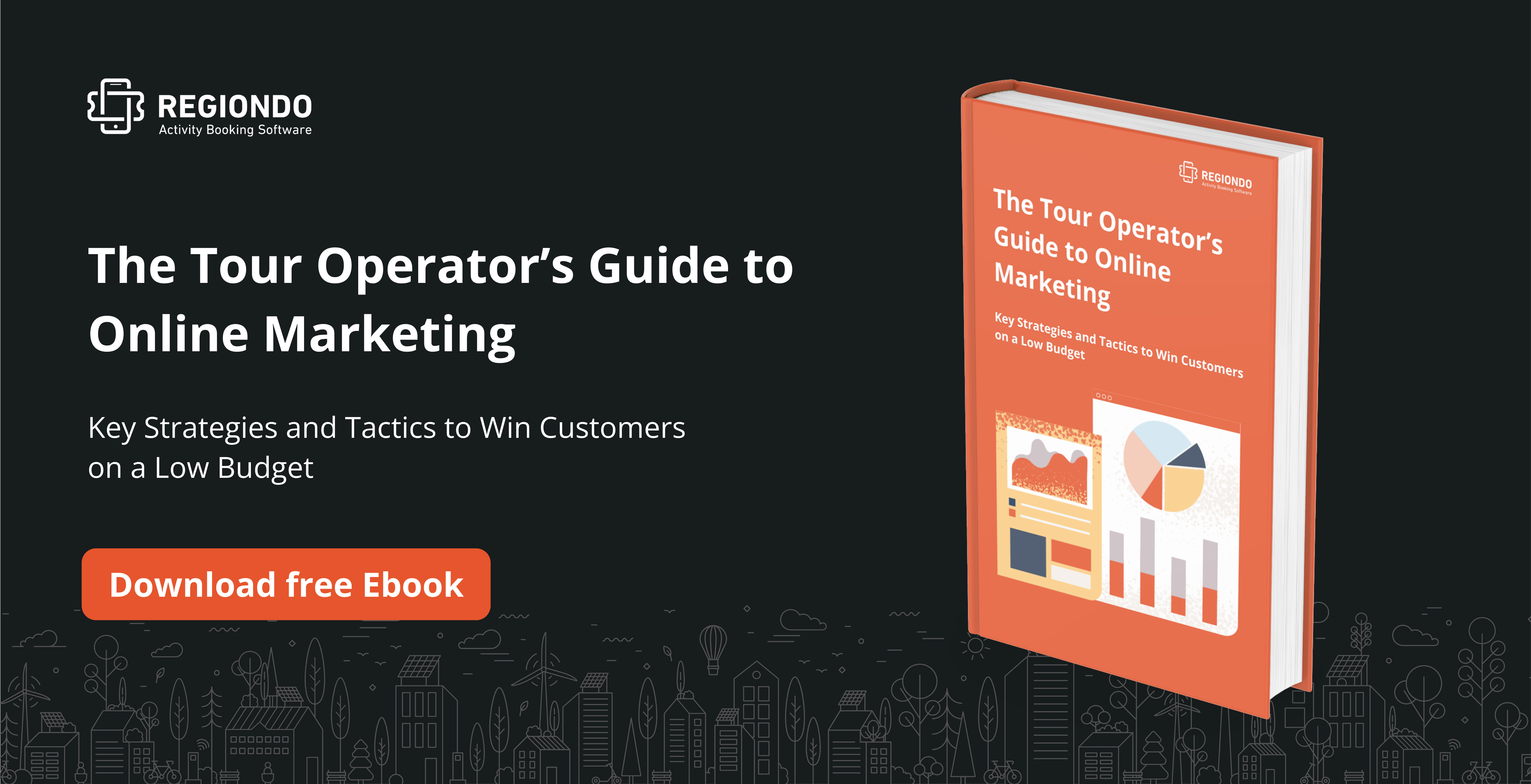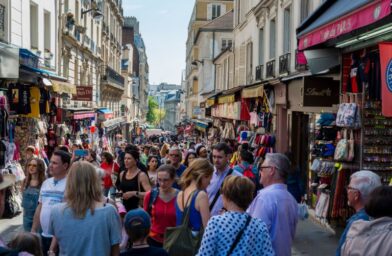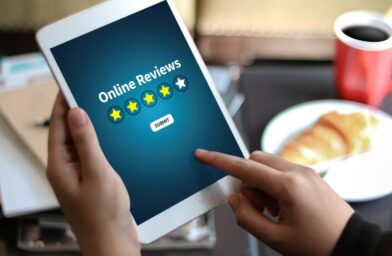Travelers today do not have to depend on friends and family recommendations to find the ideal travel package. They also do not need to rely on a travel agent to book their tours for them. They have a lot of options to choose from (your competitors) and a host of technological tools (think Google) to help them identify and book the perfect trip.
Furthermore, travelers can buy spontaneously, but they can also take quite a bit of time in between deciding to travel and which travel package to book. In fact, according to Think with Google, a traveler can have more than a hundred interactions with brands while researching their trip.
For example, Amy, a traveler planning a trip to Disney World, spent 2 months researching the trip and had 419 interactions with brands.
So why should travelers like Amy, choose and book your tour package? Well, that’s the question we’re going to help you answer.
In this article, we’ll present 10 tips to promote your tour packages and stand out from the competition so you can maximize sales.
Let’s get to it.
11 Tips for Selling More Tours and Vacation Packages
First, Get a Booking System
First things first, in order to get online bookings, you need to get a booking system to automate your processes and start selling your tours online. Try Regiondo, Europe’s leading booking system designed to streamline your travel business. To learn more about how you can make profits using a booking system, book a demo with one of Regiondo experts.
Create an Appealing Tour or Vacation Package
In order to effectively promote and sell your tour packages, you have to create a great tour package — one that appeals to your target audience. A great tour package is actually the foundation for your promotion and sales strategies: You need to have a good product that can sell itself.
How can you create a great tour package? Know your audience first.
Know Your Audience
The first thing you need to do when designing any tour package is to figure out who you’re selling to. Are you targeting families or millennials? Those two groups have different travel ideas and dreams.
For example, if you’re targeting family travelers, you may want to consider this research study by Bing. The study reported that 68 percent of family vacation idea searches are conducted by women and that women conducted 59 percent of overall travel-related searches. Among those, women aged 35-48 accounted for 41 percent of those travel searches.
So, if you want to target family travelers, based on Bing’s data, you need to market your tours to women between the ages of 35 and 48. However, that audience is not narrow enough.
You should also consider which types of travelers you would like to cater to: Higher-end, middle income, or budget?
The Bing study found that “cheap family vacations” was the top growth term for people searching for family vacation ideas. So, if you’re targeting family travelers, your ideal audience could be women aged 35-48 who are looking for budget-friendly options. You would then design your tour packages accordingly so they appeal directly to that audience.
Make Your Marketing Clear as Ice
Any marketing you do for your tour packages needs to be as clear as possible. Any user scrolling through your site, social media, or anywhere you have information pertaining to your tour package, should be able to quickly understand your unique selling point.
So, quickly spell out your marketing message for potential tourists and make it easy for them to find everything they need to make a purchase decision.
Personalize Your Messaging to Sell More Vaction Packages
The customer is king and should be made to feel that way in every interaction.
If you want to give your tour business an edge, you should deliver personalized content: from personalized emails to targeted messages. Generic emails no longer do well. In fact, they can cause more harm than good as they convey the message that you are simply aiming for quantity and do not fully understand your audience.
It would be much better to send targeted communications based on the experience a specific customer is interested in. But how can you know the individual preferences of everyone in your audience?
You can add cookie consent to your website and use marketing tools to track your audience across multiple channels. With that tracking data, you can send personalized messages with recommendations that are suited to specific customers.
If you’re already using Regiondo to manage your online bookings, you can send personalized messages to your customers from the Messages field in the Sidebar:

You’ll find 20+ templates for the most common scenarios such as confirming an order and rescheduling a booking. These are ready to use but you can also edit them so you include your brand colors, logo, and communication style.
If you don’t have a Regiondo account and want more information, book a free demo here.
Optimize Your Website and Accept Online Bookings
One of the first steps in promoting and selling your tour packages is to make sure your website is optimized to sell that tour product and is able to accept online bookings. Truth be told, your website may be your biggest distribution channel.
Every single thing you could possibly look for and find is online. Your customers are too. That means that you should also have a dedicated web presence — mainly via your website.
In addition to having a website to begin with, it’s important that you have all the key information about the tour package you’re promoting at the front and center of your site. A user should be able to easily access that information and understand what your tour is about. They should also be able to book instantly online if they decide that your tour is it. Use can use this free SEO grader tool to make sure your customers can easily find you on search engines.
The advantage for you is that you don’t need to be by your computer or phone 24/7: You can accept bookings around the clock (from all over the world, in advance and short notice), have your inventory updated in real-time, and also get more bookings (since your website is your storefront).
Make Your Site Mobile Friendly
The next step is to make sure your website is mobile-friendly, meaning that a user can do everything they can do on your desktop website just as easily on your mobile site.
Just to highlight how important it is that your site is mobile-friendly, a recent Google study found that 45 percent of smartphone users in the United Kingdom are comfortable researching, planning, and booking their entire trip using a mobile device. The same is true for 48 percent of smartphone users in the United States and 44 percent of smartphone users in France.
A Think with Google study found that people switch between desktop and mobile for certain actionable steps. Specifically, they found that a majority (46 percent) of travelers who perform travel research on mobile made their final purchase decision on mobile but used another device to finalize the booking.
Think with Google also reports that over one-third of smartphone users have a negative impression of the company if the mobile experience is slow. Speed isn’t the only issue — smartphone users get irritated by a confusing mobile site.
All this is to say that your mobile site should have easy search functionality, straightforward yet engaging language, and booking should be a hassle-free process. Ideally, user experience should be similar across all devices.
Utilize the Power of Video
The power of video is undisputed. Especially in the travel industry where you’re trying to sell an experience or dream.
Video is a great way to engage and inspire potential travelers. You can specifically use video to help travelers better envision themselves in a particular destination and with your tour offering. Since video is a highly visual and emotive medium, you can more easily inspire potential travelers to book the experience you’re selling.
Indeed, video gives them a visual interactive insight into what the experience will be like. Particularly if it’s about an adventure tour or activity.
Our advice is to make video a staple medium in your overall marketing strategy. You can start off by creating short destination videos for social media before progressing to more immersive videos.
Get on YouTube
Hosting the awesome videos you make on YouTube will put you in front of a larger audience. Travelers are curious about what you are all about and which experiences you’re offering them so allow them to find you by hosting your own travel channel on YouTube.
You can release a set of informational videos about different tours and activities, or destination guides covering things to do in a particular location. Make sure to include links to your website and any social media handles so that the viewer can contact you or stay in touch.
Tap into the Power of Social
There are several reasons why social media is key in any tourism marketing strategy. The first one is that there are almost 3 billion people on social media today — basically, your entire audience and beyond.
As mentioned earlier, travelers today go online to conduct research on travel destinations and tours. They also largely depend on reviews, especially peer reviews which are aggregated on social travel sites like TripAdvisor.
A study showed that 89 percent of millennials plan their travel primarily based on online peer reviews. A TripAdvisor study found that 53 percent of travelers do not make a purchase decision without reading reviews and that 80 percent read between 6-12 reviews before making a purchase decision. That’s huge.
Indeed, people are scouring social media platforms for peer-approved travel inspiration. They have access to travel photos, reviews, and more on social media. That content is what gives them some insight into what your tour has to offer and if it’s the ideal one for them. Back to our main point: social media greatly influences purchase decisions.
That’s why it’s important to have an active presence on all social media sites that your audience may be on. From Instagram to Pinterest, identify the platforms that your target audience uses and get on there with fresh and engaging content.
Speaking of peer-reviewed and approved travel inspiration…
Hire Travel Influencers
Travel influencers are people who can promote destinations, activities, and businesses by using their social media influence. They partner with brands to review their products or share general experiences with a particular brand, in an effort to get their audience to engage with that brand. Brands essentially hire travel influencers to create awareness or drive sales for specific products.
You may want to think about doing the same: hiring a travel influencer to promote your tour package.
However, before you make the decision to partner with an influencer, you should be mindful that appearances can be deceiving. Having a large following or heavy web traffic does not make someone an influencer. Rather, look for someone who is proactive and able to inspire their followers to take action.
It’s going to take some research to identify an influencer that is a good fit for your brand. One whose ideals match your message and brand. What you can do perhaps is find a few influencers to come and try out your tours for free in exchange for reviews.
If you’ve never ventured into this space before, it may be best to start off small and see whether it’s a strategy that will deliver desired returns. (Rather than investing in a highly famed influencer who will inevitably charge high fees and have specific demands.)
With any marketing plan, you need to know your analytics inside out. If you hire an influencer but are not tracking where your traffic and brand mentions are coming from, you will not be able to effectively target your marketing — you will be advertising broadly when a more targeted campaign could be more successful.
The good news is that if you are working with bloggers or influencers via social media, you will be able to see where traffic is coming from (via the analytics tools offered by some social platforms). You should keep in mind, however, that traffic should ultimately translate into returns; meaning that it should either result in more bookings or increased activity and engagement on your social media pages.
All in all, if done correctly, you can substantially boost your brand awareness and tour package bookings by partnering with an influencer.
Conclusion
There are many creative ways to improve your marketing strategy and promote your vacation packages. We covered the fundamental strategies that will help you to better convey your marketing message, to engage with potential tourists in an authentic way, and convert that engagement into actual sales.







